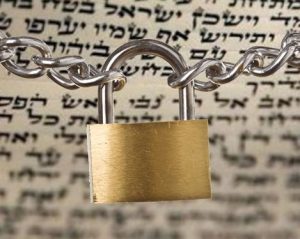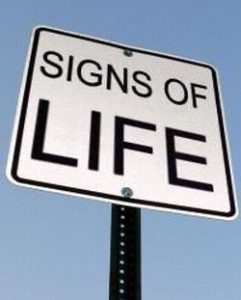Nosi 2020 – Social Distancing in 2448
by devadmin | June 4, 2020 5:03 pm
 Raboyseyee and Ladies:
Raboyseyee and Ladies:
Social Distancing in 2448:
Back in the year 2448 or efsher in 2449, the Yiddin found themselves –post eygel massacre- wandering about in the midbar. Efsher they already knew –but perhaps not, ober zicher the RBSO knew- that the miraglim (scouts) would be speaking loshoin horo (badmouthing) about the Promised Land and that their stay in the midabr would be extended as a result. Their stay would total forty years. Nu, what to do in the midbar?
The RBSO ordered up the Mishkan Project. That project avada kept them busy as they needed to secure various materials which are not, in the normal course of daily events, found in any  desert. In treasure-hunt style, where the items are pre-placed for those playing the game to find, the RBSO made things appear. Why not: He is the RBSO and avada He can make magic happen at will. The Yiddin needed to source materials and then charge various artisans and those with other skill sets to sew, weave, design and build the Mishkan and its numerous accoutrements. This work certainly detracted them from their boredom and also helped assuage copious amounts of guilt they were still feeling over their egregious infidelity to the RBSO. The bottom line: the Mishkan project was akin to a stimulus; it created unity, many jobs, and also kept the people out of trouble. In the end, and as described in this week’s parsha of Nosi (incidentally the longest parsha in the entire heylige Toirah, the Mishkan was completed and before its inauguration and consecration, and before it was ready to receive the Shichina (the Essence of the RBSO), before its grand opening, it needed a test run. The heylige Toirah teaches us that each day for seven consecutive days, Moishe put up and then took down the Mishkan. Finally on the eight day, it was erected and left standing only to be taken down when the Yiddin were on the move. Ober, there was some last minute business to attend to: Moishe was instructed to expel –temporarily- certain people from the camp. Who were they? Did they test positive for Covid 19?
desert. In treasure-hunt style, where the items are pre-placed for those playing the game to find, the RBSO made things appear. Why not: He is the RBSO and avada He can make magic happen at will. The Yiddin needed to source materials and then charge various artisans and those with other skill sets to sew, weave, design and build the Mishkan and its numerous accoutrements. This work certainly detracted them from their boredom and also helped assuage copious amounts of guilt they were still feeling over their egregious infidelity to the RBSO. The bottom line: the Mishkan project was akin to a stimulus; it created unity, many jobs, and also kept the people out of trouble. In the end, and as described in this week’s parsha of Nosi (incidentally the longest parsha in the entire heylige Toirah, the Mishkan was completed and before its inauguration and consecration, and before it was ready to receive the Shichina (the Essence of the RBSO), before its grand opening, it needed a test run. The heylige Toirah teaches us that each day for seven consecutive days, Moishe put up and then took down the Mishkan. Finally on the eight day, it was erected and left standing only to be taken down when the Yiddin were on the move. Ober, there was some last minute business to attend to: Moishe was instructed to expel –temporarily- certain people from the camp. Who were they? Did they test positive for Covid 19?
 Finally, after many weeks of no-shul –kimat all were closed mamish- there are signs of life. What signs? How much life? That avada depends on where you live and which rabbi, or board of rabbis you follow. As our shuls begin to open –avada only partially- unless you belong to a shtibel, or follow some rebbe or rabbi who is already fully open, the next big questions are azoy: which minyan will you, or can join? Did you sign up and agree to abide by the myriad rules? Did you affirm? Will you be davening inside or outside? Will the friends with whom you usually schmooze during davening be able to hear you when socially distant? And efsher more importantly for some, can you survive without getting an aliya, or partaking in the kiddish club? Is this real shul? Can I dress casually? Will my suit-pants fit? What happened to the shul you could just saunter into at will, at whatever time? What happened to minyan hopping? Will shul be at all enjoyable? Will the rabbi minyan-hop to deliver a shtikel sermon? If you’re assigned to the one of the outdoor minyonim and have to relieve yourself, must you do so outside? What the hec is going on? Am I being treated as if I were a leper?
Finally, after many weeks of no-shul –kimat all were closed mamish- there are signs of life. What signs? How much life? That avada depends on where you live and which rabbi, or board of rabbis you follow. As our shuls begin to open –avada only partially- unless you belong to a shtibel, or follow some rebbe or rabbi who is already fully open, the next big questions are azoy: which minyan will you, or can join? Did you sign up and agree to abide by the myriad rules? Did you affirm? Will you be davening inside or outside? Will the friends with whom you usually schmooze during davening be able to hear you when socially distant? And efsher more importantly for some, can you survive without getting an aliya, or partaking in the kiddish club? Is this real shul? Can I dress casually? Will my suit-pants fit? What happened to the shul you could just saunter into at will, at whatever time? What happened to minyan hopping? Will shul be at all enjoyable? Will the rabbi minyan-hop to deliver a shtikel sermon? If you’re assigned to the one of the outdoor minyonim and have to relieve yourself, must you do so outside? What the hec is going on? Am I being treated as if I were a leper?
Is this the first time Yiddin have been forced to set up camp outside? Seemingly not! Avada you recall that the Yiddin spent 40 years davening outside in the midbar; and you can’t handle a few weeks of inconvenience until shuls resume normal operations? Did the Yiddin complain while in the midbar? Never mind; let’s not get started on that topic as we will –beginning with Parshas Bihaloischo, be reading of their foibles, travails and failings. Ober, all that for another day. Moreover, did various Yiddin complain when –as described in our parsha- they were kicked out of, not one, and in certain cases, not two, and in other cases, out of three different camps? They were?
Shoin, let’s quickly recall that among the various disparate subjects covered this week –to include more counting, the famous case of the Soitah (a woman who may have sauntered into a different camp, if you chap, the Nozeer, the consecration of the Mishkan, and the famous words we bentch our kids with on Friday nights, you may have missed these four pisukim which tell us azoy:
| 1. The Lord spoke to Moishe saying: | אוַיְדַבֵּ֥ר יְהוָֹ֖ה אֶל־משֶׁ֥ה לֵּאמֹֽר: | |
| 2. Command the children of Israel to banish from the camp all those afflicted with tzara’as or with a male discharge, and all those unclean through [contact with] the dead. | בצַ֚ו אֶת־בְּנֵ֣י יִשְׂרָאֵ֔ל וִֽישַׁלְּחוּ֙ מִן־הַמַּֽחֲנֶ֔ה כָּל־צָר֖וּעַ וְכָל־זָ֑ב וְכֹ֖ל טָמֵ֥א לָנָֽפֶשׁ: | |
| 3. Both male and female you shall banish; you shall send them outside the camp, and they not defile their camps, in which I dwell among them. | גמִזָּכָ֤ר עַד־נְקֵבָה֙ תְּשַׁלֵּ֔חוּ אֶל־מִח֥וּץ לַמַּֽחֲנֶ֖ה תְּשַׁלְּח֑וּם וְלֹ֤א יְטַמְּאוּ֙ אֶת־מַ֣חֲנֵיהֶ֔ם אֲשֶׁ֥ר אֲנִ֖י שֹׁכֵ֥ן בְּתוֹכָֽם: | |
| 4. The children of Israel did so: they sent them outside the camp; as the Lord had spoken to Moishe, so did the children of Israel do. | דוַיַּֽעֲשׂוּ־כֵן֙ בְּנֵ֣י יִשְׂרָאֵ֔ל וַיְשַׁלְּח֣וּ אוֹתָ֔ם אֶל־מִח֖וּץ לַמַּֽחֲנֶ֑ה כַּֽאֲשֶׁ֨ר דִּבֶּ֤ר יְהוָֹה֙ אֶל־משֶׁ֔ה כֵּ֥ן עָשׂ֖וּ בְּנֵ֥י יִשְׂרָאֵֽל: |
It’s taka the case that certain Yiddin, those afflicted with tzo’ra’as, those who had some form of seminal emission or emissions, and those who came into contact with a dead body, were all to be sent out of the camp. They weren’t just outside; they were outside the outside! Imagine this raboyseyee: there the Yiddin were, all outdoors in the midbar and even there, many (we assume that many had seminal emissions and certainly many came into contact with a dead body (efsher in their own tents, if you chap) and yet they needed to be quarantined outside the camps? And guess what? Seemingly they all survived. Nu, for those who don’t recall, and that would be most of you who haven’t opened a chumish these past few months, let us take a second look at a topic previously covered when we first met the people being charged with discharges and other misdemeanors.
In plain English: the RBSO commands –again- that all “timayim” (impure people) leave the camp. Out! Said the RBSO: Command the Children of Israel to send out of the camp all with an eruption (tzara’as), or discharge (zav), and whomever is defiled by the dead? Both male and female shall you send out, and they shall not defile their camps amidst which I dwell? What the hec is going on here?
Seemingly, there were those who were forced out of the camp, expelled mamish– from ‘the machneh’ because they were inflicted with certain skin diseases, chronic discharges from their genitalia, and those who had come into contact with a human corpse. These people were forced out, lest they contaminate the sanctuary lying at the center of the encampment. The heylige Toirah classifies these individuals as embodying a severe degree of impurity. Yikes! Avada we can easily chap that it’s quite easy to identify and spot those with tzo’ra’as, no matter its source. It’s a visible disease typically found somewhere on the body, on the face, and elsewhere. Ober, this week, the Oisvorfer is wondering azoy: how were the Yiddin to spot those with discharges? And what are these discharges? Nu, according to kimat all -itself no small wonder- the discharges being discussed in the parsha were of a seminal nature. Mamish? Were these discharges visible? Were they so severe to be noticeable? Did they leak through clothing? Were discharge inspection officers charged with checking? Who instructed people -men and women alike- to either pull down their hoiznen, and or, lift up their skirts? Ver veyst! What was going on here? Were people forced to sign a discharge waiver before entering? Why did the RBSO direct Moishe to further direct the Yiddin regarding the expulsion of three classes of people? Is having a rash a sin? Big enough to be expelled? Nu, one can chap how certain emissions might be related to, or have come about, if you chap, through sin, ober the rash? And what about the individuals who happen to come across a corpse? Is that too a sin? And yet, they were all grouped together and banished? What’s pshat?
Let’s set the scene: On Roish Chodesh Nissan, the Mishkan’s last Inauguration Day, the RBSO told Moishe, “All three Camps of the wilderness are holy. The innermost Camp of the Shechinah is holy to the highest degree. The Camp of the Leviim that surrounds it, and B’nei Yisroel’s Camp which surrounds that of the livi’im are of lesser sanctity. Accordingly, an “impure person” may have to leave one, two, or all three of the camps, according to his or her severity of the tumah (impurity). Veyter. Which of the above was the most severe form of impurity? Seemingly, those afflicted with the tumah of tzora’as (leprosy) as they –the lepers as they were known back then- were expelled from all three Camps. The Midbar had three camps? We’ll get to that below. Ober, let’s first review what each category was. We know from the pisukim above that there are three types of impurities which cause a person to be expelled from camp. And we know this because the RBSO said so explicitly; He meant business.
The Tzurua is one afflicted with tzora’as (maybe a form of leprosy), a physical illness that occurs – according to our Sages- as a result of gossip or slander. Tzora’as seemingly occurs when we defile our relationship with others by spreading gossip or slandering others. Logic would dictate that kimat the entire population of Yiddin would be so afflicted and that they would all be expelled for who amongst us today, and who amongst the Yiddin of that generation, was not speaking ill of someone? What else kept them occupied in that Midbar forty years? In fact, we will soon be reading of the Yiddin slandering Moishe and how Miriam spoke loshoin horo about her own bother. It’s all coming up as we cover Sefer Bamidbar.
Shoin, let’s check in on the zov or zovo (zav and zava in English), male and females who have suffered some form of emission. What form? What is zov? Seemingly, it’s an impurity caused by physical impurities (read: emission of semen or the like). The Tomay Nefesh is meant to describe someone who came into contact with a corpse –lav davka (not necessarily) in the boudoir, if you chap, and is considered a defilement of the “soul.” However, we fully understand these three categories of being tomay -impure, the bottom line of what they all share in common is that they were all to be temporarily expelled. And while we are not provided with statistics on how many of each group were expelled, we can imagine that those with male discharges made up the great majority of those being banished. Es farshteytzich (it’s self-understood); veyter. Shoin, having introduced all three, let’s get back to emissions and discharges, a fluid subject, if you chap.
How does one become a zov or zovo? How many discharges and over what period of time is one declared a Zov? In plain English: The zav is a man who has a white (other than standard), non-seminal discharge from his reproductive organ. Is that emes? Grada, since high school, many were under the impression that all white emissions were standard. Others say that zav is referring to semen mamish, and mistama this you can chap. Does one emission or discharge render one a zav? Do women have discharges? Let’s find out. Nuch a mol (one more time): The term zav as used by the heylige Toirah and further interpreted by our sages, refers to a discharge of sperm that is released because of an internal sickness that effects the organs of the body in which it collects. When a zav emission is discharged, it is not released with an erection like semen, and its release does not involve any desire or satisfaction. Instead, it’s drawn out like a barley dough and is dark like the white of an unfertilized egg. In contrast, viable sperm is white and adhesive like the white of a fertilized egg. Shoin, in times when most diets are protein laden, we can relate. Zov can also be a pus-like discharge resembling the liquid from barley dough or soft barley batter. Whatever it is, if one emits zov, he is tomay (impure). Always? Immediately? Not! A man who emits Zov one time is tomay but is not a zov. He is a Ba’al Keri and must immerse and wait for nightfall to become Tahor (pure). What’s a Ba’al keri you ask? Shoin, a baal keri is one who has had a seminal emission. Fartig! His purification is accomplished through immersion in a mikvah. And the good news? A baal keri does not transfer impurity to objects. Seemingly, the baal keri comes with antibodies! More good news: according to most, in our times, the baal keri is not obligated to purify himself in the mikveh. Why not? Because we are in golus without ritual services associated with Temple services. That being said, some say it’s a commendable practice for the emitter to go to the mikveh before davening or learning the heylige Toirah. Avada one should be careful to avoid keri while in the mikveh, if you chap.
What’s so giferlich (terrible) about an accidental discharge? And when was the last time you had an accidental discharge, chazir that you are? And when was the last time you called someone in to check your discharge in order to determine if the emission was stam of a seminal nature, or, zov? And whose job is it to inspect the discharge? And where does one train for a job like this? Yeshiva? Ver veyst? In any event, in order to begin his purification process, a Zav, checking once in the morning and once towards evening must count seven clean days in which he experiences no discharge of Zov. On the seventh day or afterwards, he must immerse in a spring during the day. At nightfall he becomes Tahor, unless he suffered (or enjoyed) yet another emission, if you chap.
Ober, how is the discharger examined in order to confirm whether or not he is to be labeled a zov? Says the Mishneh: in seven ways they examine the zov before he is confirmed as a zav – i.e., at the second sighting, they examine him in seven things, whether he saw the discharge due to them, for one who sees a discharge due to a circumstance beyond his control, is clean. They also check his diet, his food and drink – if he ate or drank food which induces a discharge, or if he ate or drank excessively. They further check for load – if he carried a heavy load, jumping – if he jumped from one place to another, as his actions could lead to emissions. Next: they check for illness as illness too can cause emissions. Who knew? They check for sight –efsher if he saw and was thinking about a woman, ver veyst? Avada such sightings and thoughts could lead to emissions, if you chap. What is implied by all this checking? The bottom line: in order to get back into the camp, the inspectors needed to lay blame for the discharge on one of the above listed causes. Mark these down in the event one gets chapped with zov stains by the eishes chayil.
And the ladies? Guess what? The heylige Toirah didn’t forget about you. A woman with an unnatural discharge also has a specific set of rules. In the case of a Zava, there are differences in her status depending upon how many sightings of blood there are, and how frequent. Noch a mol (one more time): The zava, is a woman who experienced certain bodily discharges other than standard menstrual bleeding. As opposed to the cases of a ba’al keri and nida, who experience normal discharges of semen or menstrual blood, the situations of zav and zava are considered extraordinary and call for extraordinary measures.
Ober, were these various discharges a new phenomenon, a pandemic efsher? Says the medrish: this commandment of expulsion was not relevant or necessary until this point since no lepers or zavim were to be found prior to the giving of the heylige Toirah. What? No one had discharges and emissions? Is that emes or even possible? They did! Ober, the malochim (the RBSO’s angels), just prior to Revelation healed all the physical defects of the Yiddin. What happened next? Forty days thereafter, when the hapless and leaderless Yiddin built the eygel (Golden Calf), everyone’s former sickness returned. Some became lepers again, while others returned to their zovim ways, if you chap. Accordingly, when the Mishkan was established, the RBSO instructed Moishe to expel the impure. “Now that I have taken up permanent residence in the midst of B’nei Yisroel, send away the temayim!”
The bottom line: our parsha discusses certain individuals whose very presence was unacceptable within the community; not all discharges are treated equally, neither are all that are discharged. Those in our parsha were sent away “so that they do not defile the camp of those in whose midst [the RBSO] dwells.” Boundaries were created. At times, mostly on a temporary basis, a proverbial line in the sand is drawn and certain people are expelled. Does all this ring familiar in 2020?
The bottom line: In hyntige tzeytin (in today’s times), we have all been expelled; for the past few months we have all been outside the camp looking to get back in. Thankfully, the ushers, and those in charge of security, will not be checking for emissions, or asking if we came in touch with a cold body. Farkert; all we be pleased if our own bodies aren’t too warm. Welcome back to shul!
A gittin Shabbis-
The Heylige Oisvorfer Ruv
Yitz Grossman
Source URL: https://oisvorfer.com/nosi-2020-social-distancing-in-2448/
